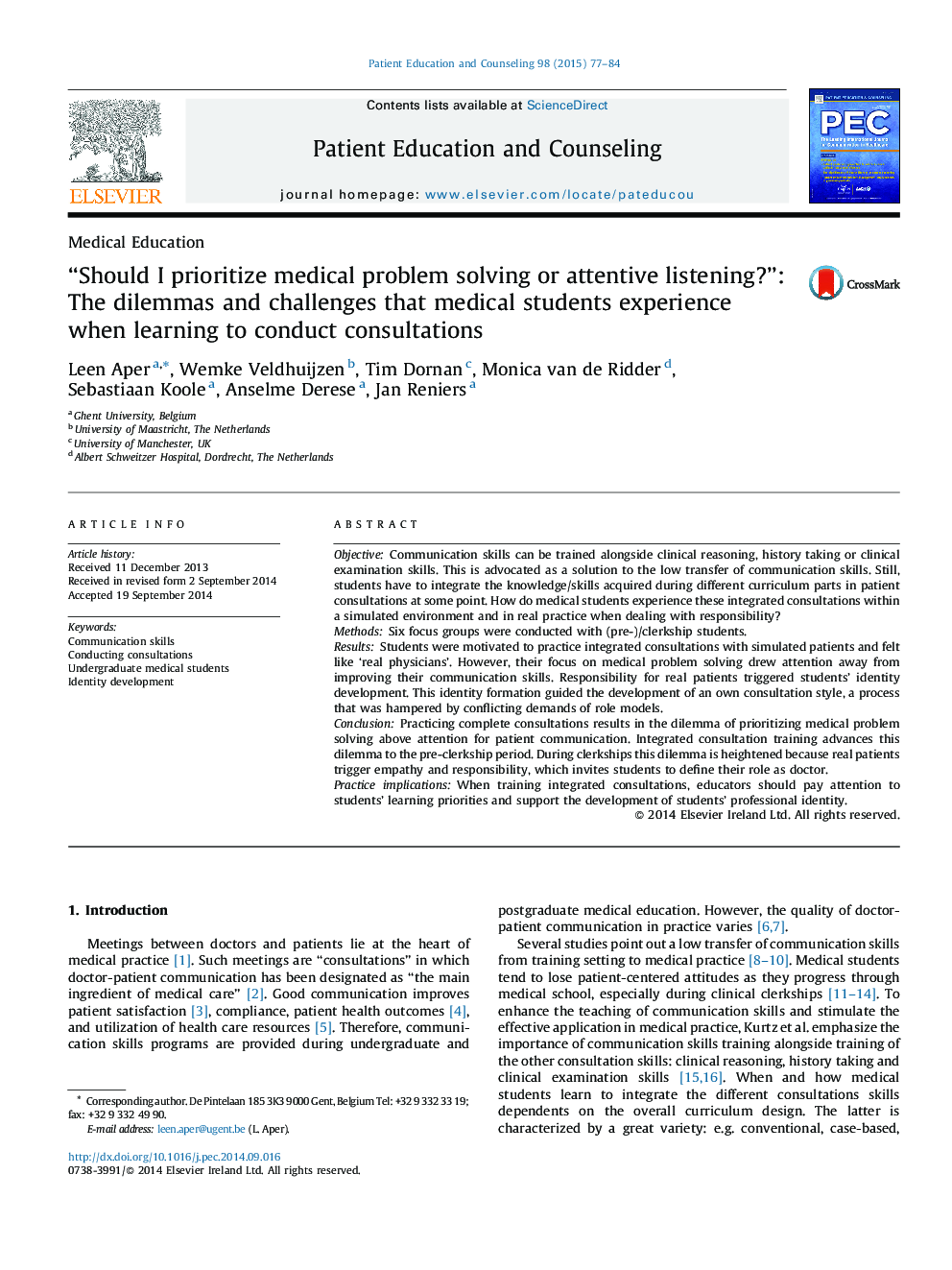| Article ID | Journal | Published Year | Pages | File Type |
|---|---|---|---|---|
| 3813246 | Patient Education and Counseling | 2015 | 8 Pages |
ObjectiveCommunication skills can be trained alongside clinical reasoning, history taking or clinical examination skills. This is advocated as a solution to the low transfer of communication skills. Still, students have to integrate the knowledge/skills acquired during different curriculum parts in patient consultations at some point. How do medical students experience these integrated consultations within a simulated environment and in real practice when dealing with responsibility?MethodsSix focus groups were conducted with (pre-)/clerkship students.ResultsStudents were motivated to practice integrated consultations with simulated patients and felt like ‘real physicians’. However, their focus on medical problem solving drew attention away from improving their communication skills. Responsibility for real patients triggered students’ identity development. This identity formation guided the development of an own consultation style, a process that was hampered by conflicting demands of role models.ConclusionPracticing complete consultations results in the dilemma of prioritizing medical problem solving above attention for patient communication. Integrated consultation training advances this dilemma to the pre-clerkship period. During clerkships this dilemma is heightened because real patients trigger empathy and responsibility, which invites students to define their role as doctor.Practice implicationsWhen training integrated consultations, educators should pay attention to students’ learning priorities and support the development of students’ professional identity.
